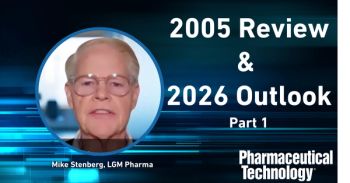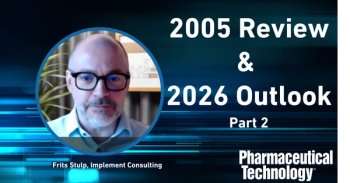In this PharmTech video feature, we highlight the week’s industry news in an easy-to-consume, fun format. New roundups will drop every Friday, so be sure to come back each week.
Collectively, the week’s coverage discusses the pharmaceutical industry’s recent developments and current regulatory landscape. Read on for recaps of each story we’ve covered.
How are AI-powered digital twins revolutionizing drug discovery?
Digital twins leverage machine learning to accurately forecast human lung function across numerous parameters, successfully revealing therapeutic effects missed by conventional preclinical studies. This methodology accelerates drug discovery by simulating the untreated outcome, directly supporting advances in precision therapeutics.
What is the relationship between AI and molecular dynamics?
In-silico modeling incorporating artificial intelligence (AI) and molecular dynamics guides early formulation for poorly soluble drug candidates, which represent a majority of compounds in development. This approach efficiently identifies optimal solubilization methods and excipients, minimizing reliance on time-consuming empirical screening.
What's the latest in instrumentation innovation for bioanalysis?
The integration of advanced platforms like flow cytometry and polymerase chain reaction requires an a priori, SOP-driven assay validation for regulated use, challenging existing guidance precedents. High-resolution mass spectrometry is increasingly utilized for quantitative bioanalysis of large molecules, including oligonucleotides and biologics, due to its enhanced selectivity and mass accuracy.
Is there a new approach to streamlining workflows to identify particulates?
A Six Sigma Define, Measure, Analyze, Improve, Control-based workflow rapidly identifies and classifies particulates using microscopy and spectroscopic analysis for efficient root cause analysis in biologics manufacturing. This integrated approach leads to timely process improvements, demonstrating how modifying shear stress from mixing can preserve solution homogeneity and product quality.
How do 3D-printed tablets impact personalized medicine?
Three-dimensional printing facilitates patient-centric drug design by allowing for personalized dosing and versatile release profiles. The technology successfully created a budesonide tablet with targeted delayed release to the ileum, validating its potential to significantly reduce in-vivo variability in drug delivery.
How does blood-brain barrier-crossing technology tackle lysosomal storage disorders?
Novel delivery platforms address the critical challenge of achieving therapeutic exposure in the central nervous system by efficiently crossing the blood-brain barrier. This focus aligns with the trend toward vertical integration in biopharma, combining R&D and manufacturing capabilities to accelerate rare disease timelines.
What's novel about an agitation model for biologics formulation?
Robust scale-down agitation models simulate mechanical stress essential for assessing and preventing protein aggregation in high-concentration biologics. For early-stage testing, an orbital shaker with horizontal 2R vials provides a reliable, scientifically justified method for stress evaluation.
How does a personalized digital control arm work?
Digital twins establish a personalized digital control arm by generating the hypothetical untreated effects for an organ receiving therapy. This innovation reduces reliance on large cohort analyses, minimizing the need for human organs as controls and potentially accelerating clinical trials.
Why does context matter in validating biomarker assays?
Validation of biomarker assays must be based on the "context of use" rather than fixed criteria, given the variances in data purpose and the endogenous presence of the analyte. Nevertheless, essential performance metrics like accuracy, precision, sensitivity, and matrix parallelism must still be characterized to meet the intended data use.





